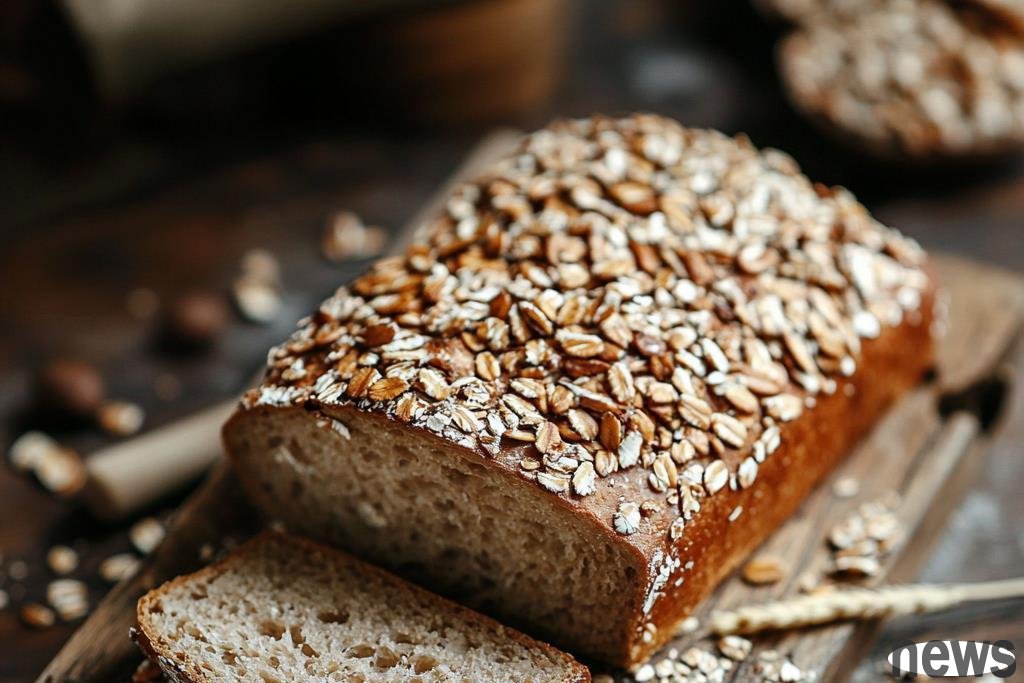When the bread is boiling, the bakery is filled with the aroma of small rice, and various breads are arranged in a row. The main whole wheat bread is oil-free and sugar-free. Is it really full rice? Chen Ziyin, a nutritionist at Changgeng Hospital i...

When the bread is boiling, the bakery is filled with the aroma of small rice, and various breads are arranged in a row. The main whole wheat bread is oil-free and sugar-free. Is it really "full rice"? Chen Ziyin, a nutritionist at Changgeng Hospital in Linkou, said that the full grain content of the whole grain product must account for at least 51% of the product content. Some businesses will use ordinary white flour and some skin granules to make the appearance of skin granules and make it "looks healthy" bread.
Brown spots may be flour and squid, which is not a full grain product.The bread has brown spots, which is it full grain? Chen Ziyin said that this is the biggest myth for consumers, "The whole wheat bread must be brown, but the brown bread may not be full wheat bread!" The brown color may be a bread made of food coloring, or a white flour mixed with white powder. Although it looks similar to the whole wheat powder, it is not a real whole wheat bread.
Chen Ziyin pointed out that the products on the market-listed "full maize" must comply with the food specifications of the Ministry of Fufu. The full maize bread you usually see in bakeries may not meet the regulations. The entire grain must have every part of the complete grain. Even if it is processed through milling, crushing, etc., the original grain skin, germ and endosperm of the grain must still be retained. Fully-meal products such as whole-meal bread and whole-meal horns also need to account for more than 51% of the total weight before they can be declared as "full", including full-meal and whole-eating malt.
The taste of true whole wheat bread is rough, so be sure to add oil and sugar without additional additions.There are often seen breads with the "high-quality whole malt" and "full malt germ" in the shop. Chen Ziyin said that people see high-quality, whole malt, germ, scribble, etc., thinking that it is a top-quality number for health paintings, but if "full malt powder" is not used, it is a small malt powder, malt powder, and flour, it is not really a whole malt.
People love fragrant and soft Taiwanese bread, but the pure "full marinade powder" has a higher fiber and a rougher texture, which will affect the relaxation of the fermentation of the noodles group. Therefore, some stores will add more oil and sugar when making full-meal bread to increase mouthfeeling. They originally thought that the whole-meal and miscellaneous bread was healthier, but instead, they hid the hot trap and lost the original "healthy" intention.
The real whole wheat has a cereal fragrance, which allows the naked eye to observe the grain and roughness.Chen Ziyin said that there are several bakeries on the market that make healthy breads, which use pure wholemeal powder and unique natural yeast fermentation to completely retain the five grains of the whole grain and also specify the content and ingredients. However, because the general whole-meal powder is not strong enough, some practitioners will mix high-gluten flour.
As for how to distinguish between true and false total McDonald? She said that the content and roughness of the grains can be observed by the naked eye. The taste of whole wheat bread is usually more slurry and has the natural aroma of grains.

In addition, the "blue grain" on the list may not be completely ground, and may involve other ground milled or processed ground. For example, red coix seed is a whole grain, but after removing the skin, it turns into white coix seed; for the taste, some grains also remove the skin and even the germ, becoming "selected powder" or "selected grain", which has a very different nutrition.
Generally speaking, it is difficult for consumers to distinguish the true full grains. When they see "organic, natural, and multi-grained", they think it is healthier, but many of them are finished products that have been refined, which have much less nutritional value. They cannot be mixed with the unfinished full grains.
Multiple grains do not equal the whole grains. Five grain powders and ten grain powders may contain a variety of refined grains.Some people will soak the flour and drink it, which makes it healthier. Chen Ziyin reminds me that if you look carefully at the label, you will write "million grain" on the packaging because non-milling products are added, so it cannot be called "full grain" according to law. She emphasized that "multi-grain" does not mean "multi-grain". Some foods with many grains may be made of multiple fine powders or fine grains.
Current laws stipulate that if a product contains only a single grain, the grain can be named as the product, such as whole wheat bread, ginger noodles, swallow slices, etc.; while the product is mixed with two or three grains of whole grain powder, which is called "full grain food". Although "poly grain" is still better than a single refined powder, you should pay attention to the ingredient marks, whether there are additives such as rice dextrin and sugar.
It should be noted that the multi-grain powder that emphasizes healthy nourishment contains rich in debris and phosphorus components. After the five grains are ground into powder, the dietary fiber is damaged, leaving only powder and sugar. Eating too much may lead to weight gain. It is not suitable for patients with diabetes and kidney disease to avoid causing physical burden.
Responsible editor: Gu Zihuan